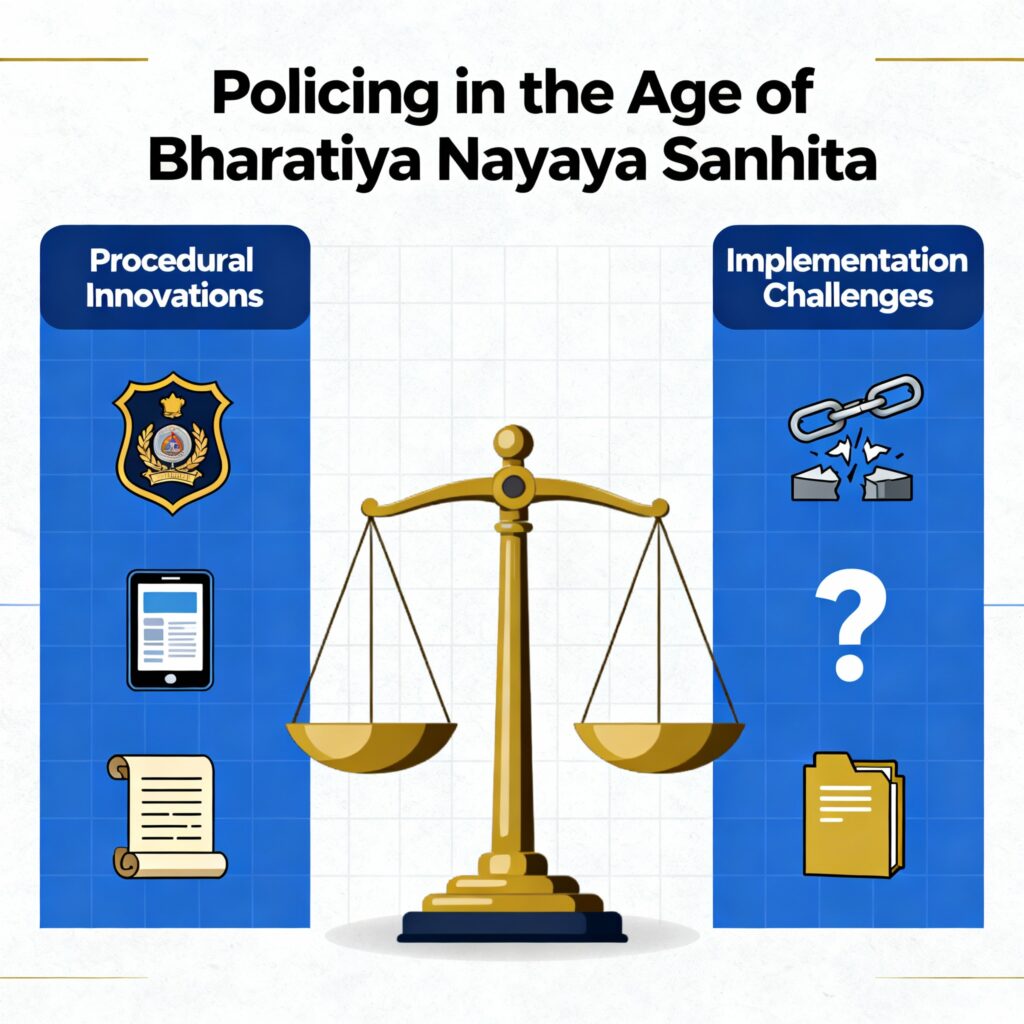Published On: 8th September, 2024
Authored By: Kashish Khanduja
University of Petroleum and Energy Studies
FACTS
The case of Pakala Narayana Swami v King Emperor concerns the discovery of a deceased Indian citizen in a steel trunk found inside a third-class compartment at Puri, the endpoint of a branch line on the Bengal Nagpur railway, on March 23, 1937. The trunk had been left unclaimed and a gruesome discovery was made as the body had been dismembered into seven portions. Medical evidence unequivocally pointed to murder.[1] The police developed suspicions about the accused and his family.
The deceased allegedly paid the accused a visit on March 21, spent the night in one of the outhouse rooms, and left on March 22 in the evening by passenger train, according to a statement the accused gave the police during the course of the investigation at his residence. Despite the defense’s objections, the lower courts allowed the admission of this remark.[2]
In addition to the disputed testimony, there was strong evidence that the accused had placed an order for a trunk, which was delivered to his residence on March 22. [3] The body of the deceased was placed into the same trunk, which was again loaded onto a train at the Berhampur station on March 23. In a car he had arranged, the accused and the trunk were driven to the station.[4]
The deceased’s widow further confirmed that on March 20, her late husband told her he was going to Berhampur. He asserted that he got a message from the accused’s spouse telling him to chase up his outstanding debt.
The Berhampur Sessions Judge found the appellant guilty of murder and sentenced him to death. Following an appeal, the conviction was upheld by the Patna High Court. By requesting special leave, the appellant attempted to appeal to the Privy Council.
ISSUES OF THE CASE
- Whether the statement of the accused can be construed as Confession, as under section 162 of CrPC or section 25 of Evidence Act?
- Whether the statement of the deceased to his wife that he is going to Berhampur to take back his loan was considered as a Dying Declaration?
RULES OF THE CASE
There are certain rules which are used in the case are: –
- Section 4: This section states the word “shall presume” where the court assumed that the letter was received by the deceased on 20th March was sent by the accused.
- Section 5: This section states the evidence of the relevant facts – as according the case was that Rs. 3000 were borrowed at an interest rate of 18% and for this almost of 50 letters were shown as the proof and also the witness saw the accused at the station on the morning of 23rd
- Section 6: This section states that as according to the case he went to Chatrapur then to Jagannadhapur and then came back to Behrampur via the jetka.
- Section 7: This section states that what was the fact in issue and as according to the case the fact in issue was that the wife of the deceased required the money and hence sending letters.
- Section 8: This section states that what was the prior step taken by the accused before committing the murder.
- Section 9: This section states the explanation of relevant facts.
- Section 17: This section states that the accused has confessed that the deceased man arrived at the house of the accused on 21stMarch which was the day on which the deceased left his house for the payment.
- Section 25: This section states the term “confession” wherein in this case the confession made was considered as not relevant and also unworthy as the confession was made to the police officer and its nature was self-exculpatory.
- Section 32 (1): This section states the term “Dying Declaration” and here in the case the statement made by the deceased was considered as Dying Declaration.
- Section 59: This section states those facts which are proved through oral evidence and here it was made by the jetka driver in relation to accused taking the deceased to his house along with a trunk which was in question.
- Section 101: This section states that on whom the burden of proof lies and in this case the burden of proving the guilt lies upon the prosecution.
- Section 136: This section states that the judge will decide the admissibility of the evidence and herein the evidence was rejected by the court.
ANALYSIS OF THE CASE
The accused’s statement, according to the Privy Council, was a combination of confession and defence of his innocence. The Privy Council overturned the accused’s conviction by granting the benefit of the doubt and made the following observation.
A statement made by an accused person implying that he had done the crime is seen as a confession.[5]
A confession either explicitly acknowledges the wrongdoing or, at the very least, largely acknowledges all the circumstances that make up the offence.
An admission of a gravely incriminating facts even if a conclusively incriminating facts cannot be considered as a confession.[6]
A statement which contains self-explanatory matter cannot amount to confession. Either accept it in its entirety or reject it.
According to section 32(1), the deceased man’s remark to his wife qualified as an admissible dying declaration.
The lower court’s ruling was overturned by the Privy Council. In doing so, the Court highlighted a few remarks that are critical to distinguishing between a dying pronouncement and a confessing speech.
In regard to 1st Issue (Confession):
Privy Council held that the accused’s statement was not wholly a confession but also an explanatory of his innocence. The following observations were drawn from Lord Atkin’s observations, and they are particularly important for determining whether a statement is confessional or not:
- A confessional statement must contain an admission of the terms of the offence or, a substantial admission of all the facts which constitute the offence.[7]
- The statement made by the made by the accused which conclude that he has committed the crime could be considered as the confession.
- In the case of Aghnoo Nagesia v. State of Bihar it was held that the statement made by the accused which contains either self-exculpatory or self-explanatory matter will not be considered as a confession.
- Merely admitting a gravely incriminating fact, even a conclusively incriminating fact, cannot in itself make such statement a confession.[8]
Having regard for their Lordships’ ruling that the purported statement was inadmissible under Section 162, the appellant’s argument that it was inadmissible as a confession under Section 25 of the Indian Evidence Act.
In regard to 2nd Issue (Dying Declaration):
- The accused’s admission to his spouse that she had invited him to Berhampur to pick up his loan was deemed by the court to be a dying declaration. The statement clarifies the transaction that led to his death, according to the Court.
- The court throws light on the fact that it is not every time that the statement made by the deceased which is considered as Dying Declaration while keeping in mind the expectation of his death.
- A deceased person’s statement is relevant if it clarifies the circumstances surrounding their death, even if they had no reason to suspect they would die at the time they made the statement.
- In the case of Patel Hiralal Jottaram v State of Gujarat, the Supreme Court upheld this decision that the statement made by the deceased would be admissible under Section 32(1) as a Dying Declaration.
CONCLUSION
In this case of Pakala Narayana Swami V King Emperor, the Privy Council culminate the following:
That the statement produced by the accused was not wholly confession but also an explanation for his innocence. A confession either admits the offence in terms or at least substantially admits all the facts which constitute the offence.[9] An admission of a seriously incriminating fact is not a by confession in itself. A statement which comprises of self-exculpatory matter within a confession must be considered as a whole and cannot be split up into parts that some exculpatory and some inculpatory.
The statement of the deceased to his wife that he was going to Berhampur as Swami’s wife had written to him inviting him to come and receive payment of his dues was considered a dying declaration and hence admissible under Section 32(1) of the Indian Evidence Act.[10]
Given that the evidence was inconclusive, the Privy Council overturned the accused’s conviction and granted him the benefit of the doubt. The bloodstained articles were discovered on April 7, and their discovery was viewed as suspicious and untrustworthy.
In conclusion, the Privy Council discovered the deceased’s statement to his wife was justifiable as a dying declaration. This was because there was insufficient evidence, particularly with regard to the police finding incriminating articles. Important guidelines about the nature of confessions and the admissibility of dying declarations under Indian law were established by this case.
BIBLIOGRAPHY
- https://lawlex.org/lex-bulletin/case-summary-pakala-narayan-swami-vs-emperor-1939/24013
- Supreme Court of India Judgement: Pakala Narayana Swami vs King Emperor (lawnn.com)
- https://lawbhoomi.com/pakala-narayana-swami-v-king-emperor/
- https://kanoonirai.com/pakala-narayana-swami-vs-emperor-1939/
- https://indiankanoon.org/doc/516808/
- https://www.legalserviceindia.com/legal/legal/article-16661-pakala-narayana-swami-vs-emperor-a-study-in-confession-and-dying-declarations.html
- https://www.ijlsi.com/wp-content/uploads/Pakala-Narayana-Swami-v.-King-Emperor-AIR-1939-PC-47.pdf
[1] Pakala Narayana Swami v King Emperor, 1939, 10 Jan 2024, https://lawbhoomi.com/pakala-narayana-swami-v-king-emperor/
[2] Id at 1.
[3] , Pakala Narayana Swami v King Emperor 19 January 1939, https://indiankanoon.org/doc/516808/
[4] Supra note 2.
[5] Kabir Kalwani, Case Summary: Pakala Narayan Swami vs. Emperor 1939, 25 Jun 2020, https://lawlex.org/lex-bulletin/case-summary-pakala-narayan-swami-vs-emperor-1939/24013
[6] Id at 5.
[7] Aashriya, Pakala Narayana Swami vs Emperor: A Study in Confession and Dying Declarations, https://www.legalserviceindia.com/legal/legal/article-16661-pakala-narayana-swami-vs-emperor-a-study-in-confession-and-dying-declarations.html
[8] Id at 7.
[9] Supra note 3.
[10] Supra note 8.




